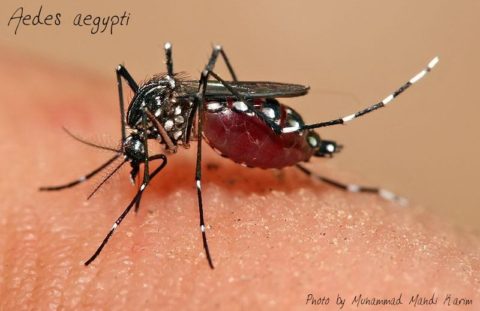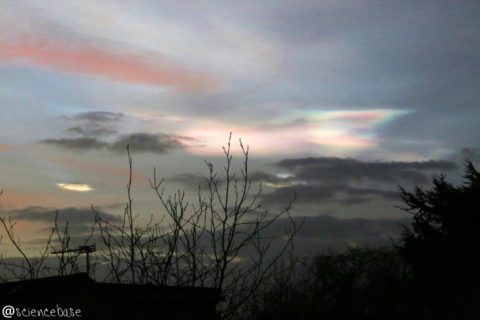A wearable sensor that carries out chemical analysis of your sweat when exercising, for instance, and sends data about metabolites, eletrolytes and skin temperature to a smart phone app, could be the next device to assist in sports and health science, in athletic training for professionals and amateurs alike and offer them a detailed view of body chemistry. It could readily be adapted for diagnostic/monitoring in illness and injury too.
Month: February 2016
Synthetic biology to fight Zika virus
Could synthetic biology be used to fight Zika virus and other emergent pathogens carried by mosquitoes? Andrew Maynard, Director of the Risk Innovation Lab, at Arizona State University, thinks so and discusses the possibilities in The Conversation:
“…infection-carrying mosquitoes are a global public health challenge, and the current spread of Zika is only emphasizing this. Using synthetic biology to prevent infection — either through vaccines or mosquito modification or elimination — would dramatically improve the lives of hundreds of millions of people. As Zika continues to spread — and if the suggested link with birth abnormalities is confirmed — synthetic biology could be one of our best hopes for containing and combating the disease.”
Read more in Maynard’s column in The Conversation.

Zika FAQ
Q What are the health effects of infection with Zika virus?
A Common symptoms are a mild fever, rash, conjunctivitis and muscle pain, but there is growing evidence that it causes serious problems for the unborn fetus, leading to microcephaly and other developmental problems.
Q Where did Zika virus come from?
A It was first identified in the Zika forest of Uganda
Q How do you catch it?
A Zika is usually transmitted through a bite from the Aedes mosquito (which also transmits dengue and chikungunya. Sexual contact has recently been found to be a possible tranmission route too.
Q Is there a vaccine against the virus or any drugs to treat it?
A Not yet
Q Is Zika lethal?
A It has not led to any deaths so far
Q Where can I find out more?
A Try the PAHO/WHO Zika FAQ for more detailed information
Image of Aedes aegypti feeding by Muhammad Mahdi Karim, GNU Free Documentation License 1.2
Down old Pompeii way
Pompeii was an ancient Roman town-city near modern Naples founded in the seventh or sixth century BC at the foot of Mount Vesuvius and famously destroyed by the volcano in AD 79. According to contemporary historians the eruption is documented as having started on 24th August 79 (Pliny) but archaeological excavations suggest that the city was buried about three months later, which is corroborated by another version of Pliny’s letter that dates the eruption as 23rd November. This date is also supported by the heavier clothing apparently worn by the people excavated. Interesting pseudo-documentary footage brings the death of a city to life:
Nacreous cloud spotting
UPDATE: These definitely are nacreous clouds, so-called because they look like nacre (mother-of-pearl). Lots of people posting photos all over twitter right now.
Just after the sun set over our village north of Cambridge, England, a whisp of white cloud caught my eye as I was staring out of my office window. Next to it there was a patch of rainbow-like fringes. Needless, to say I grabbed a camera and dangled myself out of the window to get a shot. Straggly shoots from the beech tree in our garden caught the attention of the camera’s autofocus, so it’s not a pin sharp shot of this meteorological phenomenon.

At first, I assumed it was an actual rainbow being formed by the light from the already set sun coming from that white whisp, but my buddy James over on Facebook mentioned that nacreous clouds have been spotted over Dublin today. Now, Dublin is quite some distance from here, but given that nacreous clouds are usually only seen at the poles, this could be them…if this meteorological phenomenon has somehow headed south.